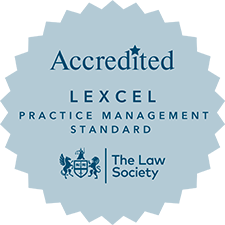On the 2nd July 2025, the Supreme Court delivered a judgement in relation to the case of Standish -v- Standish [2025] UKSC 26. This case had been closely watched by family law solicitors, including our experts at Johnson Astills, as it was set to clarify the position in respect of assets which are matrimonial, and more particularly, those that are non-matrimonial.
The matter of Standish was appealed to the Supreme Court on the basis that it was uncertain whether a payment from Mr Standish to Mrs Standish of some £77.8 million in 2017, a large amount of which Mr Standish had acquired prior to the marriage, was matrimonial or not. Mr Standish had given this money to Mrs Standish to put in trust for their children. Mr Standish argued that as this money was largely accrued before marriage, this was not matrimonial, and that it had not become matrimonial by virtue of the fact that he had given it to Mrs Standish. Mrs Standish argued that this money was matrimonial money.
Whether an asset is matrimonial or not is highly relevant as the law treats matrimonial and non-matrimonial assets differently. If an asset is matrimonial, it is subject to the “sharing principle” which means that it is an asset that should be divided between divorcing spouses, and the Court will start from the presumption that this should be an equal split. Non-matrimonial assets, meanwhile, as the Supreme Court confirmed in Standish, are not subject to the sharing principle, and will be retained by the party who owns them, save where the Court needs to access that money to meet a party’s needs.
The Supreme Court ruled that it is important to look at both the source of the asset in question, and the intent of spouses as to how that asset is to be treated. The Judges agreed with the Court of Appeal that the £77.8 million comprised 25% of matrimonial property, and 75% of non-matrimonial property. Whilst most of these funds were owned by Mr Standish prior to his marriage to Mrs Standish, some of it consisted of earnings that Mr Standish made during his relationship with Mrs Standish, which she contributed to by being the homemaker and child-carer in this time.
The question therefore is did Mr and Mrs Standish ever treat the £77.8 million as a matrimonial asset to be shared? Some assets can start off as non-matrimonial and become matrimonial, a process which lawyers refer to as “matrimonialisation”. If Mr and Mrs Standish treated the 75% non-matrimonial portion of the £77.8 million as to be shared and jointly owned, then the asset can become matrimonialised and become a matrimonial asset, and would therefore be subject to the sharing principle.
Unfortunately for Mrs Standish, the Court did not agree that this had occurred. The Court looked to the intention behind the share in 2017 and found that it was intended as a scheme to mitigate the application of Inheritance Tax. Further, it was not for the benefit of Mrs Standish, it was for the benefit of their children. In this regard, the Supreme Court found that the 75% non-matrimonial portion of the £77.8 million remained non-matrimonial.
As a Supreme Court decision, this will apply to all the Courts in England and Wales and is therefore a key decision to take note of. Whilst it has clarified the law surrounding matrimonial assets, non-matrimonial assets and matrimonialisation, it can still be difficult to know the position of any assets in your matter. Our solicitors at Johnson Astills can expertly guide you through this, and assist you in reaching the answers you need.
If you have any questions regarding your divorce and marital finances, please get in touch with the Family Team today and we would be more than happy to discuss your matter further. Please call us at our office in Leicester on 0116 255 4855 or our office in Loughborough on 01509 610 312 and ask to speak to a member of the Family Team. Alternatively, you may prefer to email us at legal@johnsonastills.com or fill in our enquiry form.








